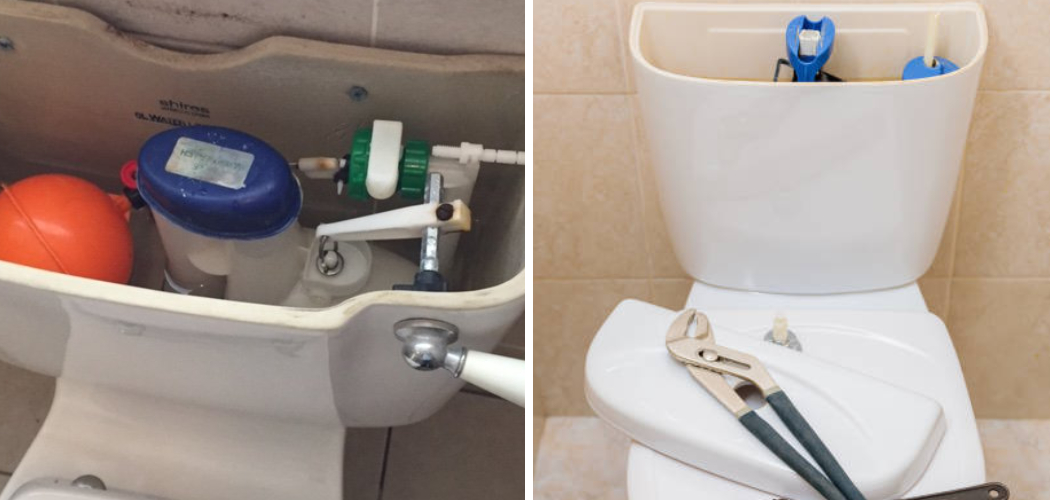A slow toilet fill can be a major nuisance, especially if you have to wait for your toilet to refill after each flush. It can also cause other problems, such as clogs or backups in the plumbing system. Fixing a slow toilet fill is relatively simple and will save you time and money in the long run. One of the biggest advantages of this repair is that it is fairly simple and easy to do. You don’t need to be an expert in plumbing, as you only need a few basic tools. If you have these items on hand, such as a plunger and bucket, you can easily fix your slow-filling toilet in no time.
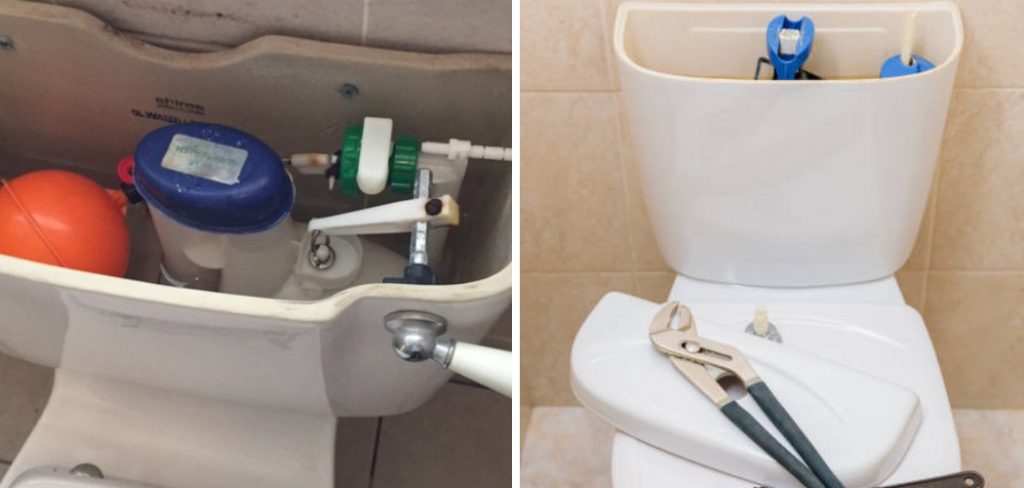
Additionally, this repair is also cost-effective. Because you’re doing the work yourself and not hiring an expert, you can save money that would be spent on professional service fees. It’s important to remember that if the problem persists after your first attempt to fix it, you may need to call a professional for further assistance. This blog article provides step-by-step instructions on how to fix slow toilet fill.
How Do You Know if Your Toilet Fill is Slow?
Before you can begin the process of fixing your slow toilet fill, it’s important to understand if the issue is even present. To check whether or not your toilet fill is slow, lift up the tank’s lid and observe how long it takes for the water level to reach its designated height (usually just above the overflow tube). If it takes longer than 15 seconds for the tank to fill, your toilet fill is likely to slow.
Once you’ve determined that the issue is present, it’s time to begin the process of fixing the problem. The most common solution for a slow toilet fill is to clean or replace the flapper valve at the bottom of the tank. This part of your toilet allows water to flow from the tank into the bowl when you flush. Over time, debris and calcium can accumulate on this valve, preventing it from opening and closing properly.
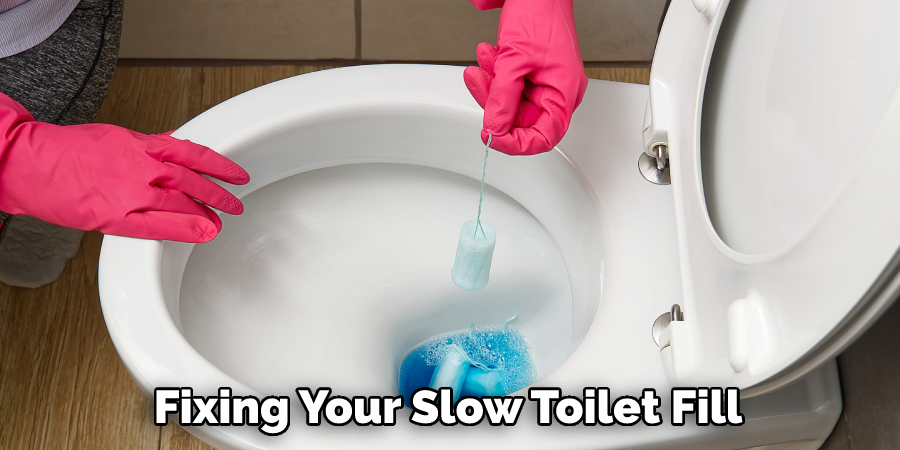
Step-by-step Instructions for How to Fix Slow Toilet Fill
Step 1: Inspect Your Toilet
Check for any loose connections, broken or cracked parts, and other obvious signs of damage. Remove the fill valve assembly from the tank and clean it with a cloth to eliminate any blockages that may slow down the toilet fill process.
Step 2: Examine the Float Ball Assembly
The float ball assembly is a crucial part of the toilet fill process. Inspect the float ball and its connecting arm to ensure it functions properly. If it looks worn, it may need to be replaced.
Step 3: Check the Fill Valve Assembly
The fill valve assembly controls when and how much water is released into the toilet tank. Examine it for any signs of wear or damage, such as a cracked valve or missing parts. If necessary, replace the fill valve assembly. Fill the tank with water and measure how long it takes before the float ball rises to its highest position, indicating that the tank is full. This could indicate a slow fill rate if it takes longer than normal.
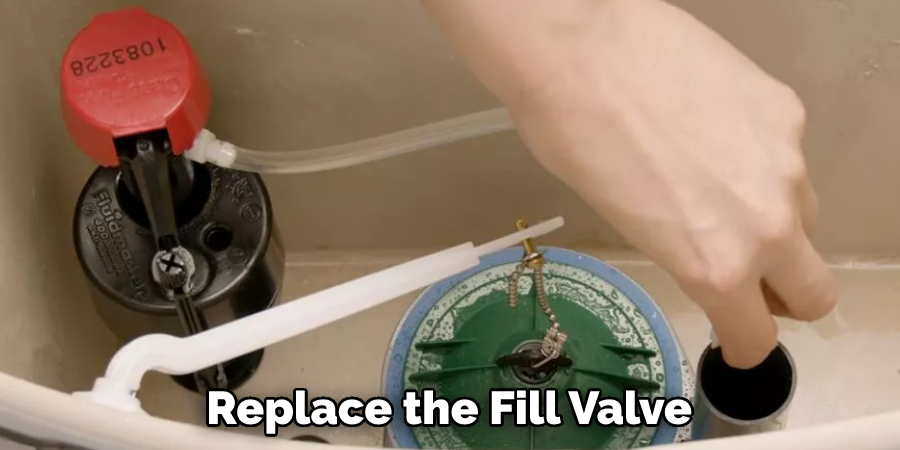
Step 4: Adjust the Float Ball Assembly
The float ball assembly is connected to the fill valve and can be adjusted with a screwdriver. Turn the adjustment screw clockwise to lower the float ball, which will reduce the amount of water being released into the tank and speed up the filling process. Once you’ve made any necessary adjustments, flush your toilet to check for any leaks. If you detect a leak, it could be caused by a malfunctioning fill valve or another issue that an experienced plumber should address.
Step 5: Test the Refill Rate
Once all adjustments have been made, test the refill rate again. The tank should fill up more quickly than before. If it doesn’t, the problem may be more serious and should be addressed by a professional. The fill tube delivers water from the main water supply line to the toilet tank. If this tube is blocked or restricted, it could slow down the toilet fill rate. Check the tube for any blockages and clear them using a wire or other appropriate tool.
Finally, turn on the water supply and flush your toilet to test out your repair job. If everything is functioning properly, you should have fixed your slow toilet fill issues! If you’re still having problems after these steps, contact a professional to come to take a look.
Precautions for How to Fix Slow Toilet Fill
- Before working on your toilet, ensure the water supply valve is shut off. This will prevent any water from running during your repairs.
- Check the water level in the toilet tank and see if it needs to be adjusted. The right level should be at or just below the fill line located inside the tank. If the water level is too low, adjust it and check to see if it solves the issue.
- Look for any build-up of sediment or calcium deposits in the fill valve, which could be causing a clog. If you find any blockages, carefully remove them with a small brush or pipe cleaner before proceeding.
- Check if the float is functioning correctly. If it is stuck in a certain position, it could prevent water from entering the tank. Replace or adjust the float as needed to ensure proper operation.
- Check for any loose connections in the fill valve and ensure they are tightly secured before turning on the water supply.
- If the above steps do not resolve your slow fill issue, you may need to replace the entire fill valve. Consult a local plumbing professional to ensure the job is done correctly.
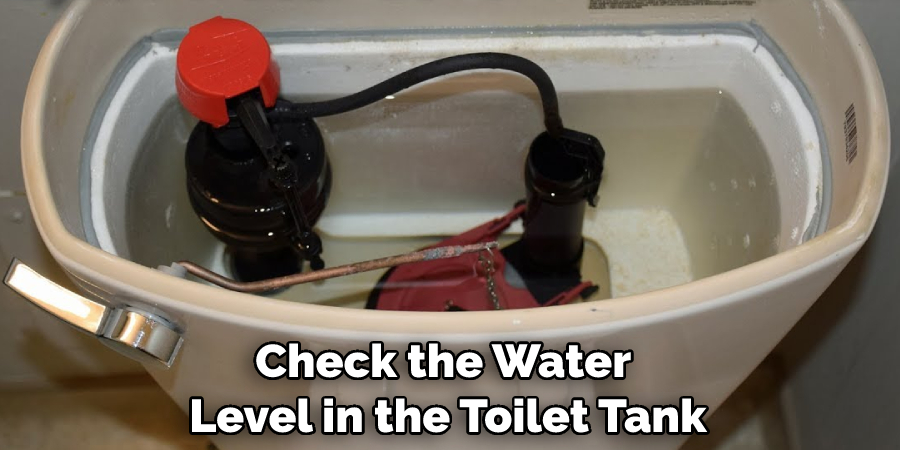
Following these steps will help improve your toilet’s water-filling issue and prevent further problems from occurring.
What Are Some of the Most Common Causes for a Slow Toilet Fill?
A worn-out flapper valve is one of the most common causes of a slow toilet fill. The flapper valve controls the water that is released from the tank into the bowl, and over time it can become brittle or corroded, which restricts its ability to open fully and deliver enough water to refill the bowl promptly.
Another common cause is a partially blocked shut-off valve, which can be caused by mineral buildup and corrosion. A third possibility is an issue with the water supply line itself, such as a blockage or leak in the pipe leading to the toilet.
If you suspect one of these issues might be causing your slow toilet fill, there are some steps you can take to diagnose and fix the issue.
First, inspect the flapper valve for any signs of wear or damage. If it is damaged, replace it with a new one. Next, check the shut-off valve for any mineral buildup or corrosion.
If you find any blockages, use a pipe cleaner or vinegar and water solution to flush out the blockages. Finally, check the water supply line for any signs of a leak or blockage. If necessary, replace the line or use a plumbing snake to clear away any clogs.
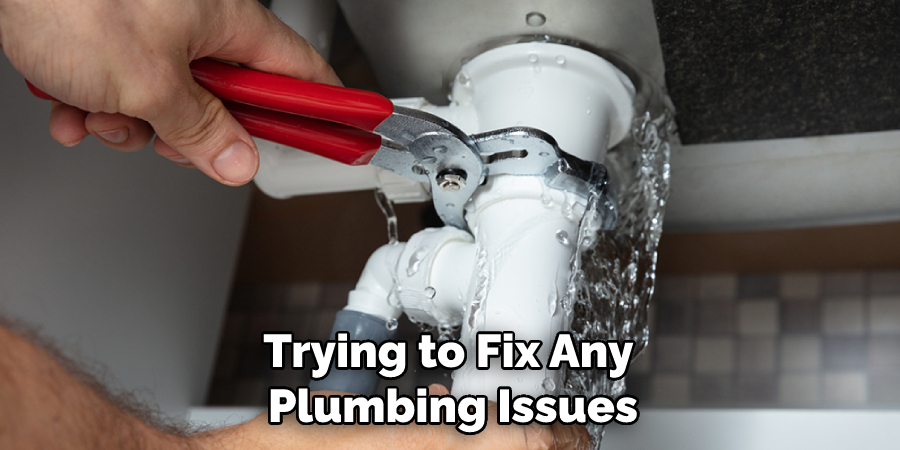
By following these steps, you should be able to diagnose and fix your slow toilet fill issue quickly and easily. Remember to use caution when trying to fix any plumbing issues, and if you’re ever unsure of what steps to take, it’s best to call a plumber for help.
How Often Should You Perform Maintenance on Your Toilet to Prevent a Slow Fill in the Future?
Regular maintenance is key to keeping your toilet running efficiently and avoiding the need for large repairs. How often you should perform maintenance depends on several factors. For instance, mineral deposits can build up inside your toilet tank over time if you live in an area with hard water. This buildup can slow down the flow of water into the bowl, leading to a slow fill. If you live in an area with hard water, it is recommended that you clean your toilet tank every six months or so. This can be done easily by flushing the tank, carefully scrubbing down the sides with a sponge, and cleaning the solution.
Additionally, many toilets suffer from weak flush due to faulty or clogged flush valves. The valve controls the water flow when you flush the toilet; if it is not working properly, this can significantly slow down refilling time. If a weak flush has been detected, it is essential to regularly check and clean the flush valve.
Finally, checking the water supply line to your toilet is important. If it is clogged, this can lead to a slow fill. To prevent this, it’s best to check the water supply line periodically and ensure no debris or blockages are present.
Why Do You Need to Call a Professional?
It is possible to fix the slow fill of your toilet yourself. But, if you are unsure of the issue or lack the necessary tools and experience to diagnose and repair it correctly, you may want to call a professional plumber instead.
A licensed plumbing contractor can accurately identify the cause of slow-filling toilets and provide reliable solutions. Common causes of slow-fill toilets include worn-out or clogged valves, faulty flappers, and inadequate water pressure. A professional plumber can diagnose these issues quickly and provide effective repairs to restore your toilet to full working order.
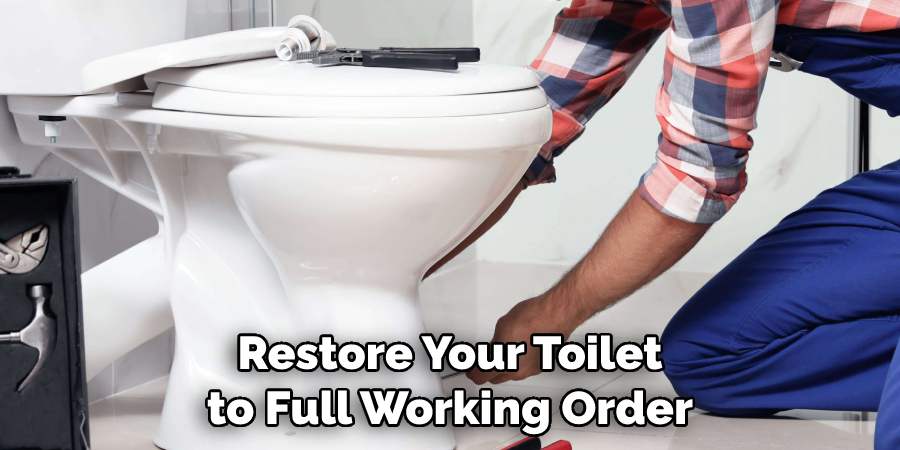
Needless to say, attempting DIY repairs without the help of a professional could lead to injury or more serious damages. Plus, you could spend far more money than necessary if you don’t have the right tools and supplies. A professional plumber can provide the necessary advice, skills, materials, and tools to get your toilet running smoothly again in no time.
How Much Will It Cost if You Hire a Professional?
Hiring a professional to fix your slow toilet fill can be expensive. How much it will cost depends on the type of clog, its location in the plumbing system, and the experience level of the plumber. Generally speaking, a typical repair job may cost anywhere from $100 to more than $500.
If your clog is deep in the plumbing system or if it requires extensive work, the repair cost can go up significantly. You should also consider any additional costs, such as cleaning supplies and parts that may be needed. If you’re unsure how much it will cost to hire a professional, it’s best to contact your local plumber or home improvement store to get an estimate.
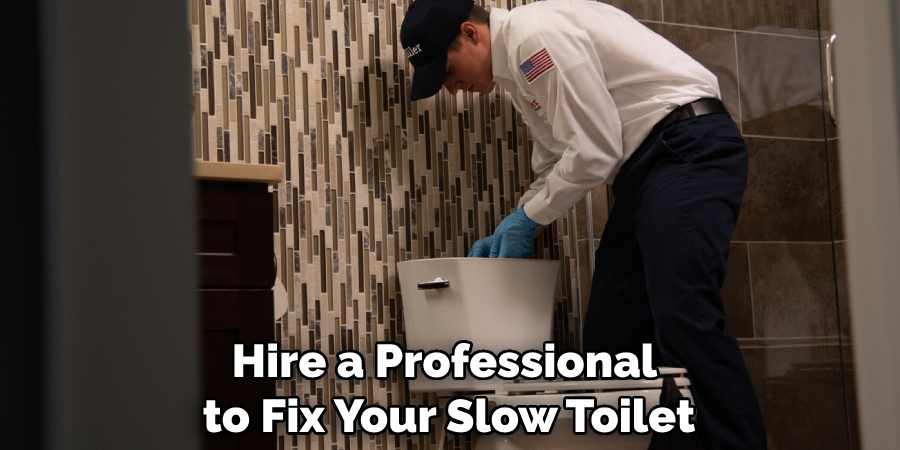
If you hire a professional to fix your slow toilet fill, ensure they are licensed, insured, and have good references. A reputable plumber should also give you an estimate of how much the job will cost before starting work. Finally, make sure to ask if there is a warranty on any work that is performed. This can help you avoid costly repairs down the road if something goes wrong.
Conclusion
Toilet fill time is a major cause of bathroom frustration, as it can take an incredibly long time for the tank to refill after flushing. Several factors, including a faulty float valve assembly, clogged toilet supply lines, incorrect water pressure settings, and sediment buildup in the tank or pipes, can cause this slow fill. If your toilet is filling too slowly, it is important to address the problem as soon as possible.
In conclusion, having a slow toilet fill can be very frustrating when you need using the restroom. Thankfully, there are ways to get your toilet back to working properly. If the toilet tank still doesn’t fill up with water after all of these methods are attempted, you may want to call a plumber to identify and fix any deeper or more complex issues. I hope reading this post has helped you learn how to fix slow toilet fill. Make sure the safety precautions are carried out in the order listed.

